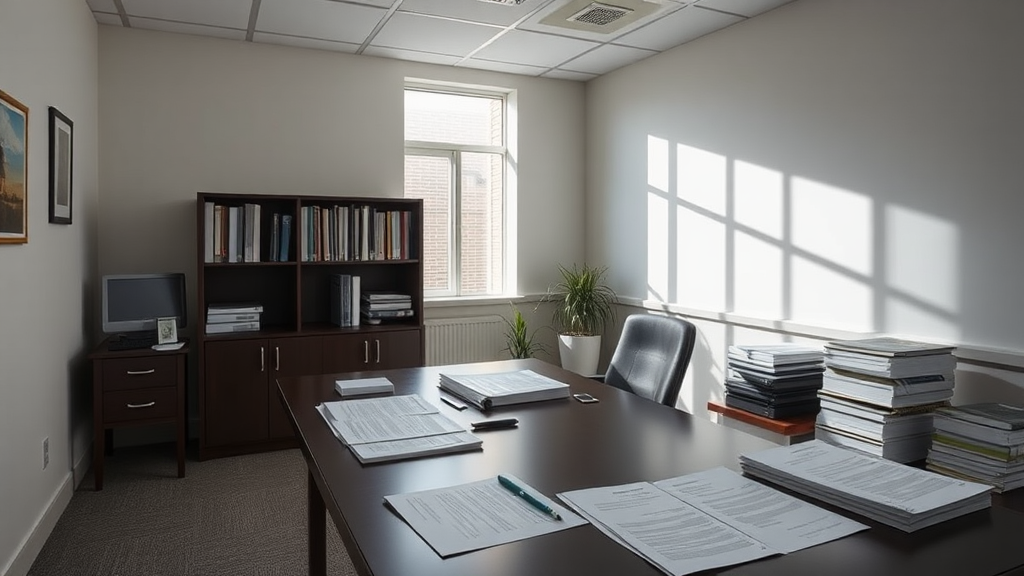Consumer Proposal vs Bankruptcy
Key Differences Explained
consumer proposal, vs bankruptcy
Consumer proposals allow you to settle debts through a structured repayment plan, typically lasting up to five years. Bankruptcy, on the other hand, involves liquidating assets to pay off creditors. While both options impact your credit score, a consumer proposal has a less severe long-term effect. Evaluate costs, future financial impacts, and your personal situation before choosing either.

Article: Consumer Proposal vs Bankruptcy
Understanding Consumer Proposal
An overview of what a consumer proposal is., Eligibility requirements for a consumer proposal., Typical terms and conditions involved in a consumer proposal.
A consumer proposal in Canada is a legal process that allows individuals to manage their debts without facing bankruptcy. It's a formal agreement negotiated with creditors to repay a portion of what's owed, extending the payment terms and often reducing the total amount payable. Consumers typically find this option more attractive than bankruptcy because it allows them to retain assets like homes and cars while offering protection from creditors' collection efforts. For example, instead of struggling with $50,000 in debt, you might get an agreement to pay back $30,000 over five years, giving you more breathing room to manage your finances.
To be eligible for a consumer proposal, certain conditions have to be met. Firstly, you need to be either insolvent or unable to pay your debts as they come due. Secondly, your total unsecured debt must not exceed $250,000 (excluding secured debts like mortgages). Insolvency is determined when your liabilities surpass your assets, essentially meaning your financial obligations are greater than what you own. For example, if you owe $150,000 in credit card debt and personal loans but only have $50,000 in assets, you would be eligible to consider a consumer proposal as a debt relief solution.
Typical terms and conditions involved in a consumer proposal include structured repayment plans that span a maximum of five years. These plans are tailored to your financial situation, making monthly payments manageable within your budget. All interest stops accruing once the proposal is filed and agreed upon, offering significant relief. Moreover, you’ll likely undergo credit counseling sessions to help manage your finances better moving forward. Remember, successful completion of a consumer proposal has the added benefit of improving your credit score over time, as opposed to the more drastic impact of declaring bankruptcy.
Understanding Bankruptcy
An overview of personal bankruptcy., Eligibility requirements for declaring bankruptcy., The process and consequences of filing for bankruptcy.
Personal bankruptcy in Canada is a legal process that provides relief to individuals unable to repay their debts. When you declare bankruptcy, your unsecured debts are essentially wiped out, but it's not a step to be taken lightly. Let's say you're drowning in credit card debt and struggling to make minimum payments; bankruptcy might be a viable option not to ruin your financial health entirely. However, it also comes with significant consequences, such as an impact on your credit score and the possibility of losing some of your assets.
To be eligible for declaring bankruptcy in Canada, you must owe at least $1,000 and be unable to meet your debt obligations. This sounds pretty basic, but think about it—$1,000 in debt can mount quickly with interest rates. Eligibility also requires you to be insolvent, meaning your liabilities exceed your assets, or you’re not able to pay your debts as they become due. This ensures the process is used by those who truly need it and not as an easy way out of financial responsibilities.
The process of filing for bankruptcy involves several steps. First, you’ll need to meet with a Licensed Insolvency Trustee (LIT) who will be in charge of administering your bankruptcy process. Once you file, the LIT will notify your creditors, and most legal actions against you will stop. Over the following months, you’ll need to attend two financial counseling sessions. The consequences include a note on your credit report for 6-7 years for a first-time bankruptcy and potentially losing assets such as a second car or a property not considered your primary residence. Most personal possessions, like furniture and clothing, are usually exempt, so don’t worry about losing the basics. The goal is to find a fresh start, but be mindful—this comes with strings attached.
Elimiate up to 80% of Your Debt
High cost of gas, high cost of groceries, high lending rates, low salary - being in debt is not your fault! See if you qualify for government debt programs and get out of debt today!
Comparing Costs and Fees
Detailed analysis of costs associated with consumer proposals., Breakdown of costs and fees involved in bankruptcy., Comparison of long-term financial impacts of each option.
When it comes to consumer proposals in Canada, costs can vary but typically involve a setup fee and a percentage of the debt being settled. For example, if you're settling a $50,000 debt, you might pay around $1,500 upfront and then 15% of the settled amount over 3-5 years. This can translate to a manageable monthly payment, making it less burdensome than other debt solutions. However, be aware that certain firms may tack on hidden fees, so it's always wise to thoroughly review any agreement before signing.
Bankruptcy, on the other hand, comes with a distinct cost structure. The initial filing fee can be around $1,800, depending on your situation. Additionally, if you have surplus income, you may have to make monthly payments to your trustee for 21 months or even longer. Administrative fees are also subtracted before any remaining funds go towards your creditors. While bankruptcy might seem like a quick fix, it’s important to consider the long-term damage to your credit score. This makes careful deliberation and perhaps seeking professional advice crucial before deciding to go down this path.
The long-term financial impacts of consumer proposals versus bankruptcy can be quite different. While both options will affect your credit, a consumer proposal generally has a less severe impact, as it shows an effort to repay the debt partially. It remains on your credit report for three years after the final payment. Bankruptcy, however, stays on your credit report for six to seven years after discharge for a first-time bankruptcy. Although both options provide immediate relief from debt, choosing the one that aligns with your financial future goals and current situation is key. Think of it like choosing between a short but intense workout versus a longer, more sustainable exercise routine—each has its trade-offs and benefits.

Understanding consumer proposal vs bankruptcy options.
Impact on Credit Score and Financial Future
How a consumer proposal affects credit scores and for how long., Impact of bankruptcy on credit scores and future financial opportunities., Case studies showing real-world examples of credit impact post-consumer proposal vs post-bankruptcy.
A consumer proposal can be a lifeline for Canadians drowning in debt, but it does make waves on your credit score. Initially, your credit score will take a dive—showing an R7 rating—which signifies you’re making regular payments through a proposal. Fortunately, this negative mark only lasts for three years from the date you complete the proposal, or six years from when you start, whichever comes first. So, if you diligently pay off the proposal quickly, you can start rebuilding your credit score sooner. Compared to bankruptcy, which can stain your credit report for six to seven years, consumer proposals are often a gentler option.
Bankruptcy, on the other hand, is like hitting a financial reset button but comes with its own heavy consequences. Your credit score plummets to an R9 rating, the lowest possible, which indicates a person is bankrupt or has a bad debt that hasn’t been settled. This rating sticks around for six years for a first-time bankruptcy and up to fourteen years for a second one. During this time, qualifying for new credit can be extremely challenging, and even if you do qualify, you’ll likely face higher interest rates and less favorable terms. Many Canadians find that recovering from bankruptcy financially is a slow and arduous journey.
Let’s look at some real-world examples to understand the impact better. Take Sarah, who opted for a consumer proposal to manage her $30,000 debt. She paid off the amount in four years, and by the fifth year, she started seeing her credit score improve significantly, even qualifying for a mortgage. Now, contrast that with Jake, who declared bankruptcy to discharge his $50,000 debt. Although he was debt-free after 9 months, his R9 rating stuck for six years, delaying his financial recovery. Jake found it tough to secure any form of credit for years, affecting his ability to invest in opportunities like starting a small business. These stories reveal that while both methods affect your credit score and future financial opportunities, the road to recovery can be shorter and less bumpy with a consumer proposal.
Making the Right Choice
Factors to consider when choosing between consumer proposal and bankruptcy., Expert opinions and advice on making an informed decision., Anecdotes of individuals who have chosen each option and their outcomes.
Choosing between a consumer proposal and bankruptcy in Canada can feel like navigating a financial maze, but understanding the key differences can ease your journey. A consumer proposal allows you to keep your assets and repay a portion of your debts over five years, acting like a customized repayment plan agreed upon with your creditors. In contrast, filing for bankruptcy might clear your debts faster but often comes with the loss of some assets and a long-lasting impact on your credit score. Factors like the amount of debt, your income stability, and any assets you wish to protect should all be weighed carefully. For example, if you have a steady income but find the debt overwhelming, a consumer proposal might be your best bet.
Experts generally advise considering the long-term effects on your financial health before making a final decision. Richard, a financial advisor in Toronto, quips, “Think of it like choosing between a sprint and a marathon. Bankruptcy is the sprint—quick but with some immediate pain. A consumer proposal, however, is more of a marathon—slower, allowing you to catch your breath and keep some control over your finances.” Consulting with a Licensed Insolvency Trustee can provide you with a tailored analysis of your situation, making the path forward clearer and more manageable.
Real-life experiences can also shine a light on this decision. Take Marie from Vancouver, who chose a consumer proposal to manage her $50,000 debt. It took five years to complete, but she was able to keep her home and car, ultimately rebuilding her credit. On the flip side, John from Calgary opted for bankruptcy due to his higher debt load and irregular income. He did lose some assets, but the freedom from debt allowed him to start fresh, and he’s now focused on building a new and more sustainable financial life. Each path has its pros and cons, and the right choice largely depends on your personal financial landscape.
References
| Article references |
|---|
| Personal Bankruptcy in Canada: Process and Impact, Government of Canada |
| Consumer Proposals: Detailed Overview, Financial Consumer Agency of Canada |
| Costs and Benefits of Consumer Proposal vs Bankruptcy, Insolvency Canada |
| The Impact of Bankruptcy on Your Credit Score, Equifax Canada |
| https://fal.media/files/lion/3U73y26KcoDuUN9ZzKLT8.png, Credit Counselling Canada |
This article references information from the above sources.
Eliminate up to 80% of Your Debt
High cost of gas, high cost of groceries, high lending rates, low salary - being in debt is not your fault! See if you qualify for government debt programs and get out of debt today!